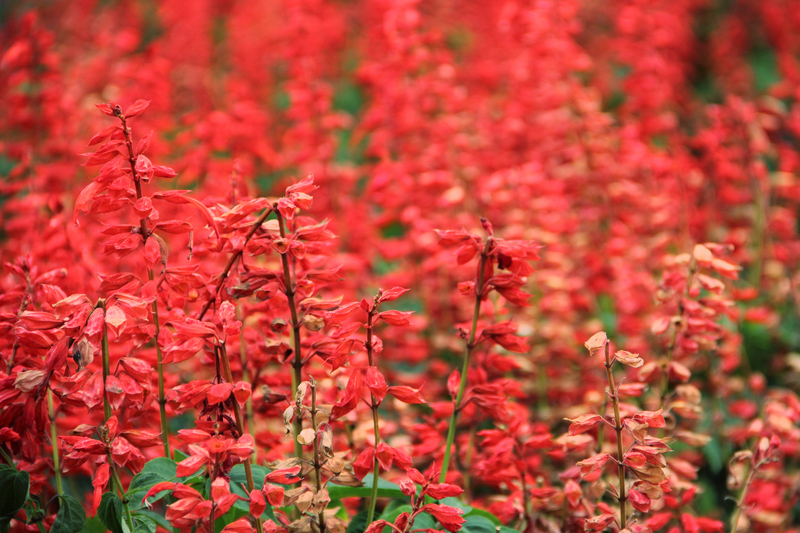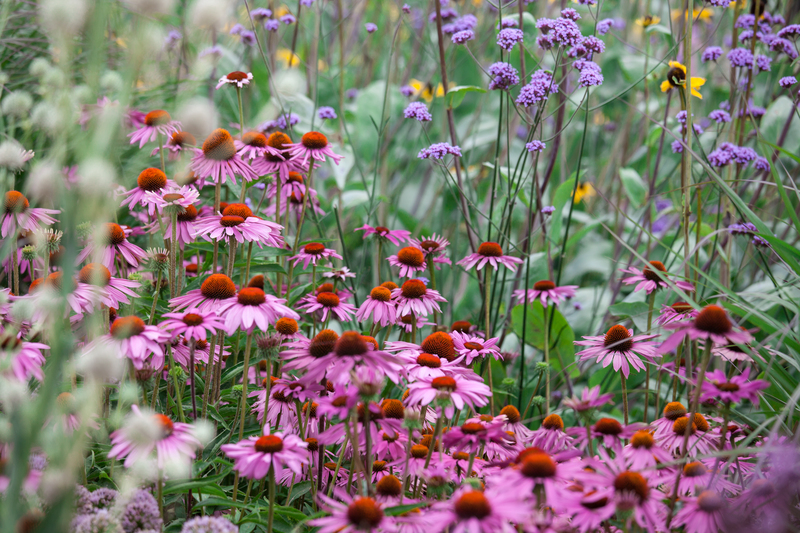Creating a Safe and Fun Garden for Dogs
Posted on 25/08/2025
Creating a Safe and Fun Garden for Dogs: An Expert Guide
Are you dreaming of a beautiful garden where your canine companion can safely explore, play, and relax? Creating a dog-friendly yard isn't just about setting boundaries; it's about turning your outdoor space into a delightful haven that entertains, enriches, and protects your pup. In this comprehensive guide, we'll cover everything you need to know about designing a secure and engaging garden for dogs, with practical landscaping tips, play area ideas, and crucial safety features.
Why a Dog-Friendly Garden Matters
A pet-safe garden is more than an aesthetic choice. It significantly enriches your dog's quality of life. Dogs are energetic and curious by nature. A well-designed backyard for dogs encourages healthy activity, mental stimulation, and emotional well-being--while reducing unwanted behaviors associated with boredom or frustration.
- Exercise: Running, digging, and exploring keep dogs fit and healthy.
- Stimulation: New smells, textures, and spaces excite your dog's senses.
- Bonding: A shared outdoor space is perfect for games and training together.
- Safety: You'll control access to hazards and toxic plants for peace of mind.
Let's dive into the essential steps to create your dream garden for dogs!

Planning Your Dog-Safe Garden Layout
Every dog--and every garden--is different. Assess your space and your puppy's personality before you start:
- Size: Large dogs need more room to run. For smaller breeds, even a modest yard can work with clever design.
- Age & Agility: Puppies and seniors have different needs. Avoid steps and steep drops for less mobile dogs.
- Temperament: Does your dog dig, chew, or try to escape? Planning prevents future headaches.
Start with a sketch or a list. Mark shady spots, fences, existing plants, and areas receiving sun during the hottest part of the day.
Safe Fencing: Keeping Your Dog Secure
A secure fence is the foundation of any safe dog garden. Here's what to consider:
- Height: Medium or large dogs can easily leap over short fences. Aim for at least 1.8m (6ft), or higher for agile breeds.
- Material: Chain link, solid wood, or vinyl are good options. Avoid sharp wire ends or splintered wood.
- Gaps and Holes: Patch all escape routes. Ensure gates latch firmly and self-close if possible.
- Anti-Dig Solutions: Bury wire mesh or install paving along the base if your dog is a digger.
Pro Tip: Certain breeds--like huskies or terriers--are notorious escape artists. Reassess your perimeter regularly for weak spots.
Dog-Friendly Garden Plants: Safety Always Comes First
Many common garden plants are toxic to pets. When creating a pet-friendly garden, choose non-toxic varieties, and check every addition with trusted sources such as the ASPCA's list of toxic and non-toxic plants.
Great Plants for Safe Gardens
- Sunflowers
- Roses (watch for thorns!)
- Marigolds
- Camellias
- Snapdragons
- Bamboo
- Nasturtiums
Plants to Avoid
- Lilies
- Foxglove
- Oleander
- Azalea
- Rhododendron
- Daffodils
- Sago palm
Always check the full list before buying or planting anything new!
Mulching and Ground Cover
Some mulches and ground covers, like cocoa mulch, are dangerous to dogs. Instead, choose safe options:
- Pine bark or cedar mulch
- Pea gravel or smooth river stones (too large to swallow!)
- Artificial turf (make sure it doesn't get too hot or cause burns)
- Clover, lawn grass, or creeping thyme as low-maintenance, hardy ground cover
Dog Play Areas: Making Your Garden Fun & Exciting
A fun garden for dogs includes designated zones to burn off energy, satisfy instincts, and enjoy life. Incorporate the following features:
Digging Pits
- Avoid endless holes by providing a specific spot to dig:
- Use sand or loose earth in a wood frame or kid's sandbox.
- Bury chew toys or treats to encourage use.
Obstacle Courses
- Set up agility tunnels, jumps, and ramps using safe materials.
- Use garden benches, poles, or logs. Cushion any sharp edges.
- Regularly inspect for splinters or protruding hardware.
Paths and Trails
- Dogs love to patrol and explore. Create looping paths for zoomies or peaceful strolls.
- Use pea gravel, bark, or flag stones--avoid hot asphalt or pointy rocks.
- Mow grass shorter on main "runways" to protect paws from hidden hazards.
Water Features
- Shallow splash pools or fountains delight water-loving breeds in summer.
- Use care with ponds--install barriers or covers to prevent drowning, especially for small sizes.
- Change water daily and clean weekly to avoid bacteria and mosquitoes.
Providing Shade and Shelter
Dogs can quickly overheat in hot weather. Responsible dog garden design always includes:
- Sturdy shade trees (non-toxic)
- Dog houses or insulated kennels
- Tarps, sails, or pergolas for flexible sun coverage
Tip: Always provide a bowl of fresh water. Change multiple times a day in hot weather.
Safe and Durable Garden Materials
Your garden should be not only inviting but also resistant to wear and tear from your dog's activity. Focus on durability:
- Replace fragile pots or ornaments with shatterproof alternatives.
- Choose robust outdoor furniture that resists chewing or scratching.
- Avoid toxic paints and chemicals in decking, fencing, or decorations.
Pet Security: Excluding Dangers and Hazards
A vital part of making a dog-safe yard is keeping potential risks out.
- Compost bins: Fence these off--compost can contain mold and food scraps toxic for dogs.
- Sheds and garages: Lock up tools, weed killers, pesticides, and fertilizers out of reach.
- Ponds and pools: Install covers or fencing for safety.
- Sharp objects: Remove broken glass, old wire, and garden stakes.
- Electric cables: Bury or shield with tough tubing so dogs can't chew.
Remember: Even seemingly safe items left out--like BBQ drip trays or batteries--can pose a risk if a curious pup investigates.
What About Fleas and Ticks?
Design your pet-friendly garden to discourage these parasites:
- Keep grass short and remove leaf litter.
- Use natural pest deterrents like nematodes or diatomaceous earth (safe for dogs when used correctly).
- Check your dog regularly after play.
Enrichment: Keeping Your Dog Engaged
A fun and safe garden for dogs thrives with plenty of sensory stimulation and interactive features. Try these enrichment ideas:
- Hide-and-seek toys: Scatter toys and treats around the yard for your dog to sniff out.
- Rotating playground: Change toys and objects every few weeks to keep things fresh.
- Natural features: Logs to climb over, boulders for jumping, or leaf piles for snuffling.
- Sound elements: Wind chimes, bubbling water, or rustling grasses add new sensory layers.
Dogs thrive on variety. Even moving flower pots or shifting some garden furniture can create a whole new adventure!
Training Tips for Garden Manners
A garden for dogs works best alongside clear behavior training. Here's how to teach good habits:
- Boundaries: Use positive reinforcement to reward staying inside the fence or off garden beds.
- Paws off the flowers: Guide your dog to designated digging areas and discourage trampling or chewing plants.
- Barking: Prevent excessive barking with toys, company, and training rather than scolding.
Supervision is key, especially for puppies and new rescues. Gradually increase freedom as trust develops.
Seasonal Considerations for Dog Gardens
Spring
- Protect vulnerable new shoots with small fences or netting.
- Check for emerging hazards as the garden regrows.
Summer
- Provide extra water and shaded rest spots.
- Be cautious with fertilizers--keep dogs inside while applying, and wash off paws.
Autumn
- Rake leaves promptly; damp piles can encourage fungus.
- Watch for mushrooms, which may be toxic if eaten.
Winter
- Avoid salt-based de-icers on paths; use sand or pet-safe grit instead.
- Brush snow from paths to maintain access to potty areas.

Quick Reference: Dog-Safe Garden Checklist
- Secure fencing with no escape gaps
- Toxic-free plants and safe mulches
- Shady shelters and water sources
- Enrichment zones for play and stimulation
- No access to hazardous areas, tools, or chemicals
- Regular lawn/garden maintenance to minimize pests and dangers
- Ongoing supervision and positive reinforcement for garden manners
Conclusion: Your Safe and Happy Dog Garden Awaits
With a little planning and creativity, your dog-friendly backyard can become a vibrant retreat where both you and your four-legged friend thrive. Focus on safety, stimulation, and enrichment, and always tailor your design to your dog's unique needs. The result? A beautiful, secure garden where memories grow--and tails never stop wagging!
Start today, and watch your pup blossom in their new safe and fun garden!

